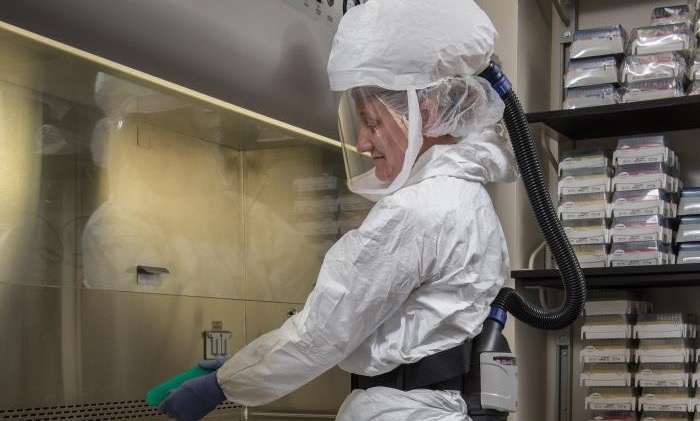
The coronavirus epidemic will be one of the most urgent, complex, and quickly moving stories of the year. Newsrooms that don’t already have health and science reporters should quickly build up a network of freelancers with experience covering infectious disease and designate a team internally to focus on this story and build their expertise. Reporters who cover this beat learn to evaluate evidence, decipher jargon and statistics, find reliable experts, and humanize intimidating stories. Here are some tips to keep in mind—and please add your advice in the comments. We need to support one another and share ideas as we cover this evolving public health crisis.
- Keep the stories coming. You may have published dozens of stories about COVID-19 already, but as more people start paying serious attention to this epidemic, you’re increasingly writing for people who didn’t realize what a big deal it was when it was circulating mainly in China. That means they’re coming to you with even less understanding of the situation than your earlier audience. It’s more important than ever to be clear and thorough, even if you feel like you’re repeating yourself again and again.
- Define terms in every story, and maybe create and link to a glossary. When you listen to lots of briefings from the Centers for Disease Control and Prevention and state and local health authorities, it’s easy to pick up their language. Even when you’re in a rush, it’s important to translate their jargon. Most people don’t know the terms “community transmission” or “asymptomatic spread” or really understand what quarantine is.
- Use social media effectively. Twitter shouldn’t be your assignment editor, but if people are asking questions on social media or are showing they’re confused or fascinated by something, maybe you should write about that. And share the heck out of your own stories. People want reliable information right now, and you are providing it.
- Look to infectious-disease and public-health experts for solid information, and be on alert for people trying to sell themselves as experts when they aren’t. Lots of misinformation is circulating about coronavirus, and this problem will get worse as the outbreak does. Some politicians are minimizing the danger, some quacks are trying to sell sham treatments or protections, and some anti-vaxxers are weaving coronavirus into their conspiracy theories about vaccines.
- Avoid debunking a fringe theory if it hasn’t gotten much attention yet. Repetition makes misinformation feel more true.
- When a piece of misinformation does become prominent, debunk it effectively. Research on misinformation has revealed some best practices for this: Replace the false information with something that is true. Say immediately that this false thing is false, especially in headlines. Provide a reason why the falsehood has been spreading or why people might believe it or why someone is promoting it, to help people understand why they’re seeing this misinformation even though it’s false. Simple and brief debunks are usually the most effective.
- Avoid false balance. Experienced health, science, and environment reporters know not to give equal time to creationists, climate change deniers, anti-vaxxers, or flat Earthers. There’s no need to tell some “other side” of coronavirus when the other side is nonsense.
- Acknowledging fears or uncertainties can defuse them. Rather than say “don’t panic,” say that some people are worried, and that’s understandable because this is a new situation and we don’t know how it will end, but … (and then provide the reliable information they might otherwise be too scared to process).
- Explain what we don’t know. People have a lot of questions that can’t be answered yet, such as how infectious this virus is in people who aren’t yet showing symptoms. Saying that something is a question that researchers are urgently trying to answer can ease your reader’s confusion.
- Beware of “othering” who is at risk. It’s true that people with existing medical conditions seem to be more likely to have serious complications from COVID-19. But many of the people in your audience have existing medical conditions or loved ones who do. The first cases were in China, but viruses don’t respect cultural or political boundaries. Share information about who is at risk without implying that they are to blame or that they aren’t part of your audience.
- Include context. Where appropriate, help readers understand how the health care system works, how science works, how scientific publishing works, how the immune system works, how viruses work. This is a reachable moment—people who don’t usually pay attention to these subject areas are suddenly fascinated.
- Interview nurses. Journalists typically quote doctors rather than nurses as expert sources, even when nurses’ experience and knowledge is more relevant. Especially with infectious disease control, nurses can offer critical information and perspective.
- Look for opportunities to show virologists, epidemiologists, nurses, public health officials, vaccine makers, geneticists and more doing their work. As you know, but as some readers don’t necessarily appreciate, science is a process and it’s done by real people. People really want to see competence right now.

Laura Helmuth is the health and science editor for The Washington Post and past president of the National Association of Science Writers. She has edited for National Geographic, Slate, Smithsonian, and Science magazines. Follow her on Twitter @LauraHelmuth.
